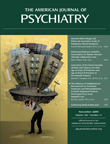Ziprasidone and Citalopram Use in Pregnancy and Lactation in a Woman With Psychotic Depression
To the editor: Although there is a small body of literature regarding the use of citalopram during pregnancy and lactation, minimal clinical information about the effects of the use of the drug ziprasidone during pregnancy or lactation is available. The present case is of a woman treated with ziprasidone and citalopram throughout pregnancy and lactation, without adverse effects to the mother or infant. This is the first report of ziprasidone use throughout pregnancy and lactation.
“Ms. MJ” was a 26-year-old African American woman with psychotic depression and posttraumatic stress disorder. Eleven months prior to giving birth, treatment with ziprasidone, 40 mg daily with food, and citalopram, 60 mg daily, was established to treat severe depression, suicidal thoughts, and olfactory hallucinations. The patient responded well. During this course of therapy, she became pregnant. The risks and benefits of continuing ziprasidone and citalopram were discussed with her. As a result of significant relapse risk, she chose to continue both medications.
At 34 and 35 weeks of gestation, Ms. MJ was hospitalized with exacerbation of depressive and psychotic symptoms as a result of medication nonadherence. During her hospitalization, citalopram and ziprasidone were reinstated, and she responded well. Upon discharge, daily-monitored medication administration was instituted to ensure adherence, and she remained well throughout the remainder of her pregnancy.
At 39 weeks of gestation, the patient vaginally delivered a male infant weighing 2.64 kg. Apgar scores were 8 and 9 at one and five minutes, respectively. All physical and neurological assessments at birth were normal. Although no formal assessments were completed, informal assessments by a pediatrician at birth and at 2, 9, and 18 weeks postnatally revealed no drug-related complications or withdrawal effects. Breastfeeding was initiated after birth and maintained postnatally through 6 months, with occasional formula supplementation for third-party feedings. At age 6 months, the child was deemed healthy by his pediatrician, with normal growth and development.
Animal studies have demonstrated possible teratogenic effects at ziprasidone doses similar to human therapeutic doses (1) , and an abstract described malformations in an infant exposed to ziprasidone in utero (2) . However, the effect on human infants remains unclear. In the present case, use of ziprasidone throughout pregnancy was not associated with complications in the mother or infant. In addition, use of ziprasidone during lactation did not result in any detectable adverse outcomes. Ziprasidone concentrations in breast milk were not determined. However, minimal transfer of ziprasidone into breast milk is expected as a result of its extensive protein binding. This theory is supported by a previous case describing very low or nonquantifiable ziprasidone levels in breast milk (3) .
Although the present report demonstrates that ziprasidone was not associated with reproductive toxicity or behavioral teratogenicity, the drug should be used with caution in pregnancy and lactation until a larger database on safety is available, and consideration should be given to preferential use of antipsychotics with greater established safety.
1. Pfizer: Geodon (ziprasidone). New York, Pfizer, 2008Google Scholar
2. Vaux KK, Jones KL: Ziprasidone embryopathy: Are the defects caused by pharmacologically-induced fetal arrhythmias? J Invest Med 2005; 53:S137Google Scholar
3. Schlotterbeck P, Saur R, Hiemke C, Gründer G, Vehren T, Kircher T, Leube D: Low concentration of ziprasidone in human milk: a case report. Int J Neuropsychopharmacol 2009; 12:437–438Google Scholar



